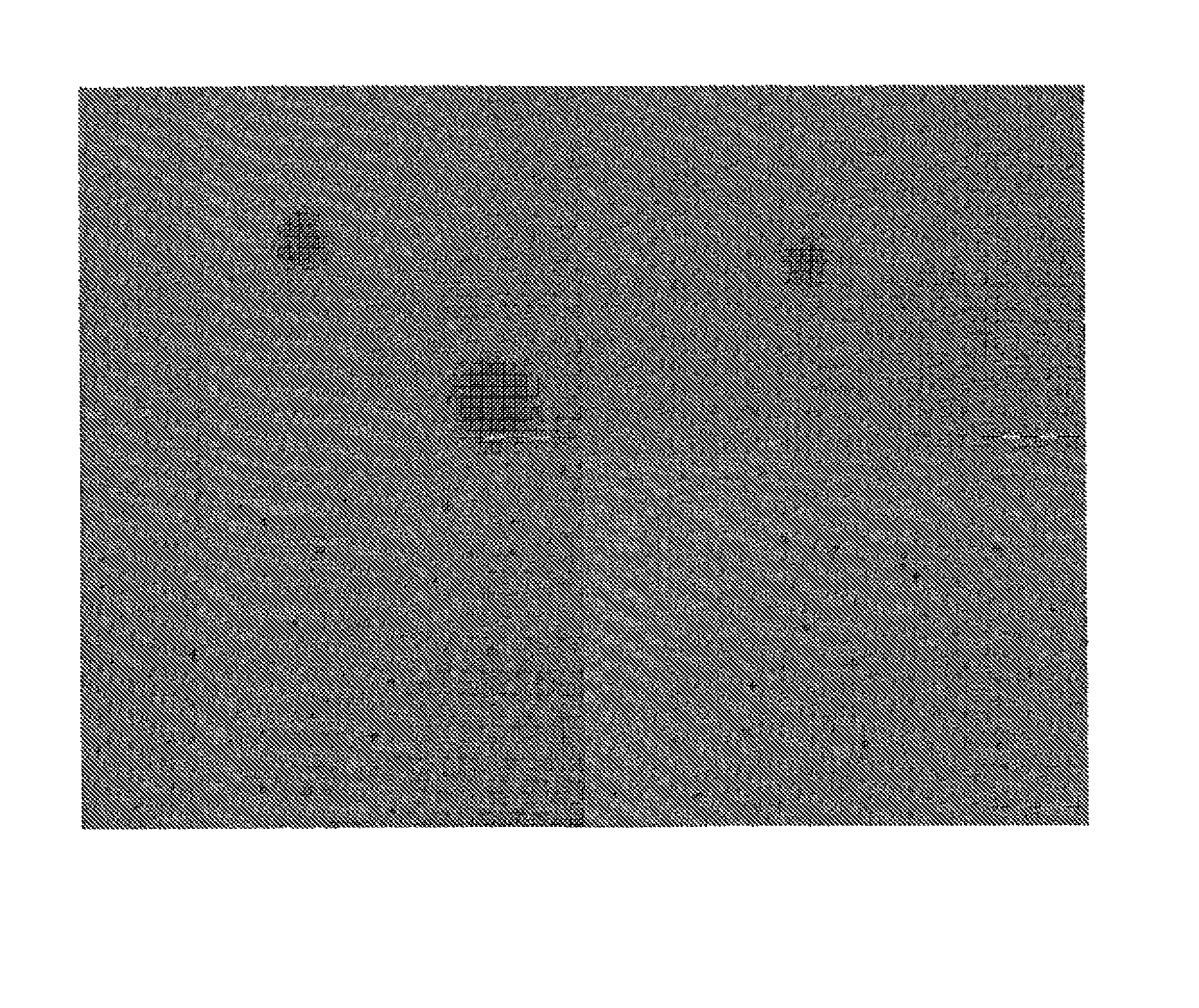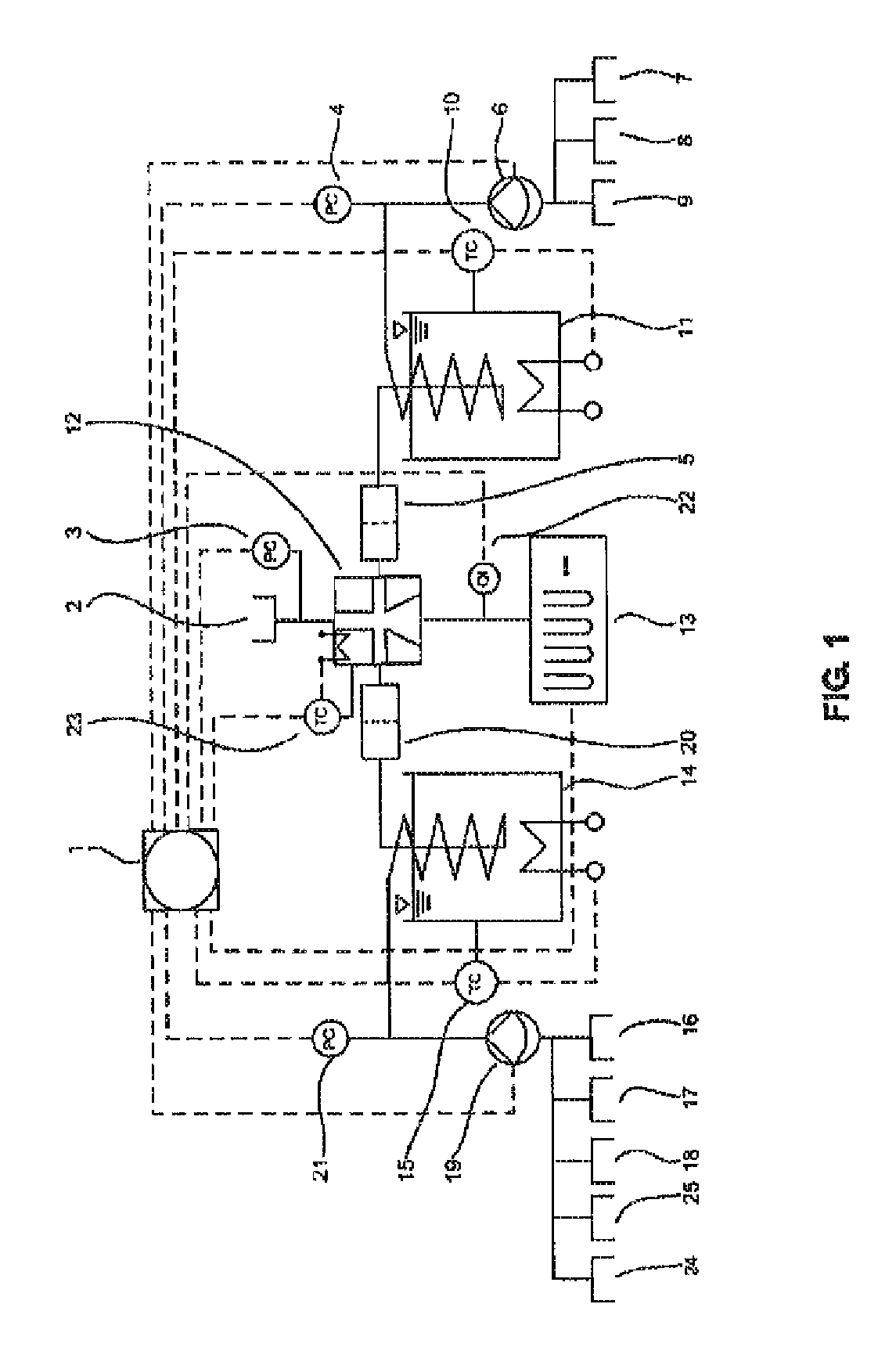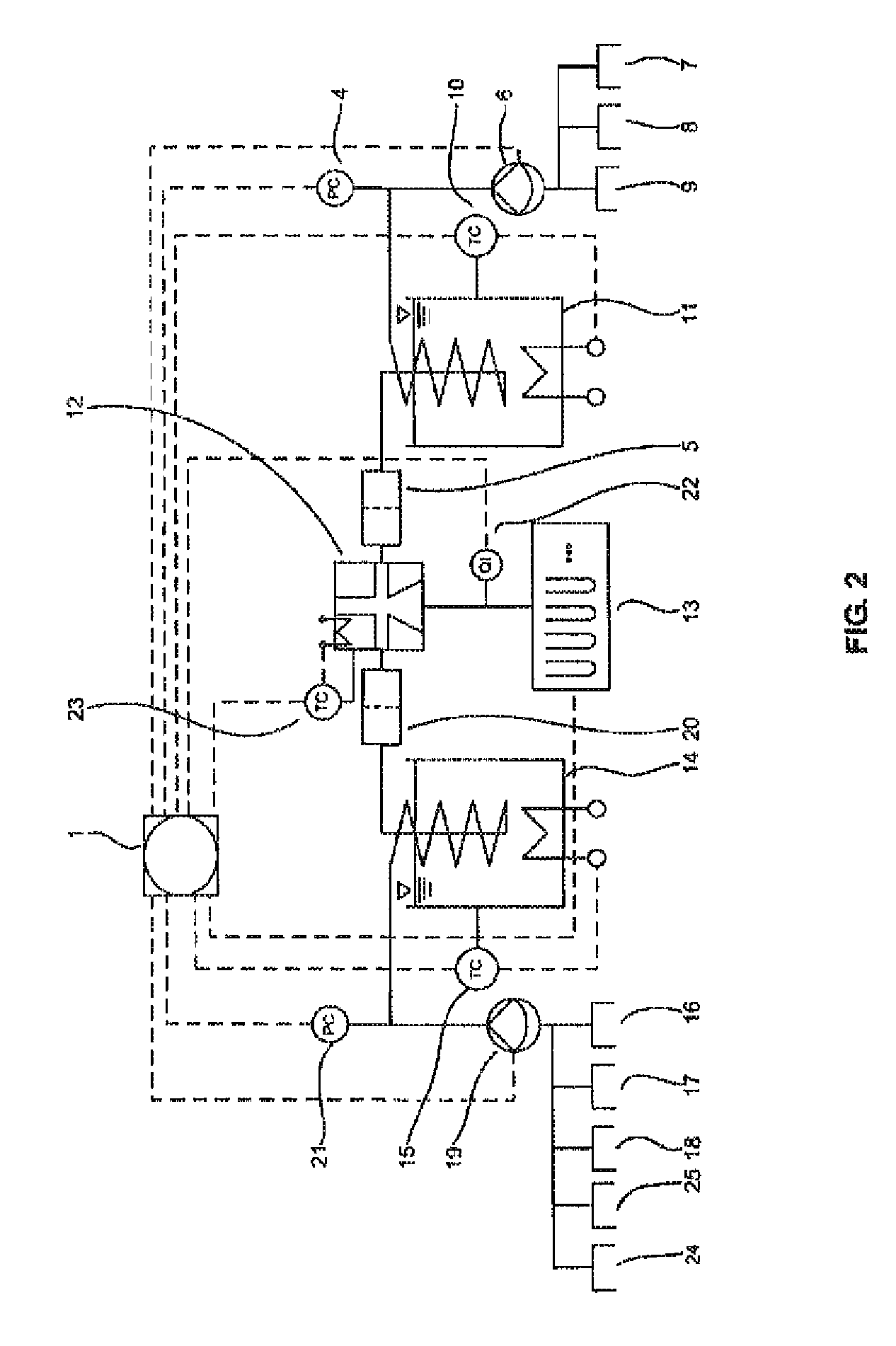Method and device for producing microparticles or nanoparticles
a technology of nanoparticles and microparticles, applied in the field of methods and devices for producing microparticles or nanoparticles, can solve the problems of inability to control particle size or particle properties, and product quality may suffer considerable,
- Summary
- Abstract
- Description
- Claims
- Application Information
AI Technical Summary
Benefits of technology
Problems solved by technology
Method used
Image
Examples
example 1
[0081]Nanoparticles were produced using Nifedipin as model substance and Eudragit S 100 as model excipient. Eudragit S 100 and Nifedepin were dissolved together in acetone to give a concentration of 10 mg / ml and 1 mg / ml respectively. Water was used as nonsolvent. A temperature of 40° C. was set for the solvent, the nonsolvent and the microjet reactor. Particles with different particle sizes were produced by altering the solvent and nonsolvent flow rates. The table in FIG. 3 shows the particle sizes obtained.
example 2
[0082]Nanoparticles were produced as described in Example 1 except that, in order to observe the influence of temperature on particle size, the solvent and nonsolvent flow rates were fixed at 10 ml / min while the temperature was varied. The graph in FIG. 4 shows the particle sizes obtained. The x-axis indicates the particle size and the y-axis the corresponding temperature. The particle size is seen to increase with increasing temperature.
example 3
[0083]Nanoparticles were produced as described in Example 1 except that, in order to observe the influence of gas pressure on particle size, the solvent and nonsolvent flow rates were fixed at 10 ml / min while the gas pressure was varied. For this experiment, an additional gas infeed line for introducing inert nitrogen gas was added to the experimental setup shown in FIG. 1. An increase in particle size with increasing gas pressure was demonstrated using this experimental setup. The graph in FIG. 5 shows the results of the experiment from this example. The x-axis indicates the particle size [nm], and the y-axis the gas pressure [bar]. This example shows that, as the gas pressure increases, particle size increases too.
[0084]FIGS. 1 and 2 show a typical configuration of the device according to the invention. The device comprises an arithmetic and control unit (1), an air and gas infeed (2), a pressure sensor (3) for controlling the air pressure, pressure sensors (4, 21) for controlling...
PUM
| Property | Measurement | Unit |
|---|---|---|
| size | aaaaa | aaaaa |
| angle | aaaaa | aaaaa |
| speed | aaaaa | aaaaa |
Abstract
Description
Claims
Application Information
 Login to View More
Login to View More - R&D
- Intellectual Property
- Life Sciences
- Materials
- Tech Scout
- Unparalleled Data Quality
- Higher Quality Content
- 60% Fewer Hallucinations
Browse by: Latest US Patents, China's latest patents, Technical Efficacy Thesaurus, Application Domain, Technology Topic, Popular Technical Reports.
© 2025 PatSnap. All rights reserved.Legal|Privacy policy|Modern Slavery Act Transparency Statement|Sitemap|About US| Contact US: help@patsnap.com



